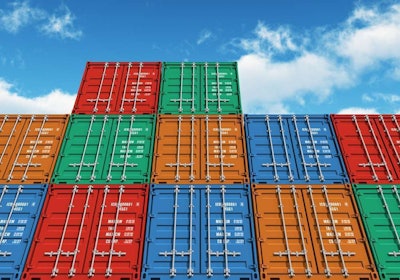

They’re kind of like Legos for big kids.
A new community is emerging to come up with creative ways to turn these simple, sturdy metal boxes into homes, condos, dormitories, studios, retail stores, hotels and emergency shelters.
What makes surplus cargo containers attractive is that, in addition to being inexpensive, they are incredibly strong.
A few years back I noticed some of our more inventive Contractor of the Year finalists were using surplus containers. Roger Greenwalt of Sweet Meadow Farm Drainage used his as a permanent office. He cut in a few doors, windows and skylights, put in paneling and insulation and ran wiring to power office equipment. John and Jim McCaughey of Haverton, Pennsylvania, used a row of surplus containers to store all their small landscaping tools, machines and materials, keeping them out of the rain and securely locked up in an otherwise very unsecure West Philly neighborhood.
Because of the volume of trade we do with China, cargo containers have been piling up at U.S. ports. That means you can get a used container as low as $900, and the average price works out to between $2,000 and $3,000. The standard sizes come 8-feet wide by 8-feet tall and 20-, 40-, 45-, 48-, or 53-feet long.
What makes surplus cargo containers attractive is that, in addition to being inexpensive, they are incredibly strong. Compared to a rickety, stick framed construction trailer, a cargo container’s floor can hold up to 57,000 pounds. The self-reinforcing rigidity of the metal walls, floor and ceiling is such that you only have to anchor them to your foundation at the corners. And you can stack them as high as your building codes will allow.

You can cut openings in cargo containers and stack or cantilever them in a variety of creative combinations.
According to Leslie Horn, CEO of Three Squared, a company that specializes in cargo container design and construction, “Our construction costs an average of half of other building methods. The structures take a fraction of the time to build new and are more energy efficient than their counterparts because of a high-purposed combination of technologies our team is creating and blending together.”The company also says that since the U.S. imports more than it exports to China, most containers remain here. It’s cheaper for China to build a new container than it is to ship one back empty. Hence a surplus of empties in ports around the country.
Three Squared is slated to build more than $109 million in cargo container projects in the next two years including a four-story, multi-family condo complex and a lake Tahoe recreational cabin project with 65 cabins.










